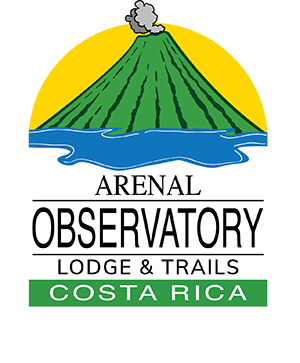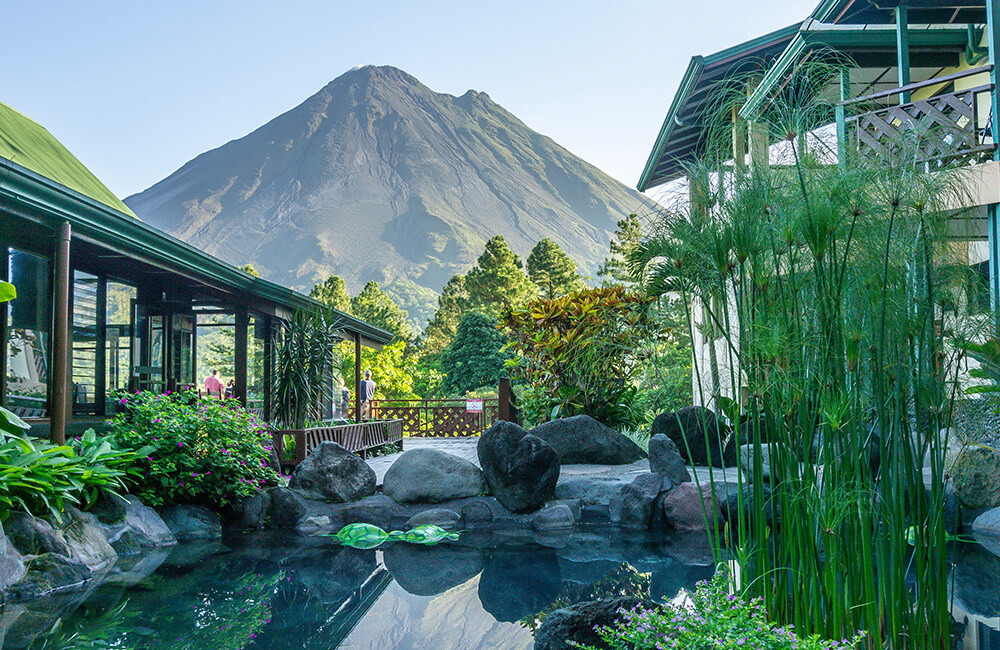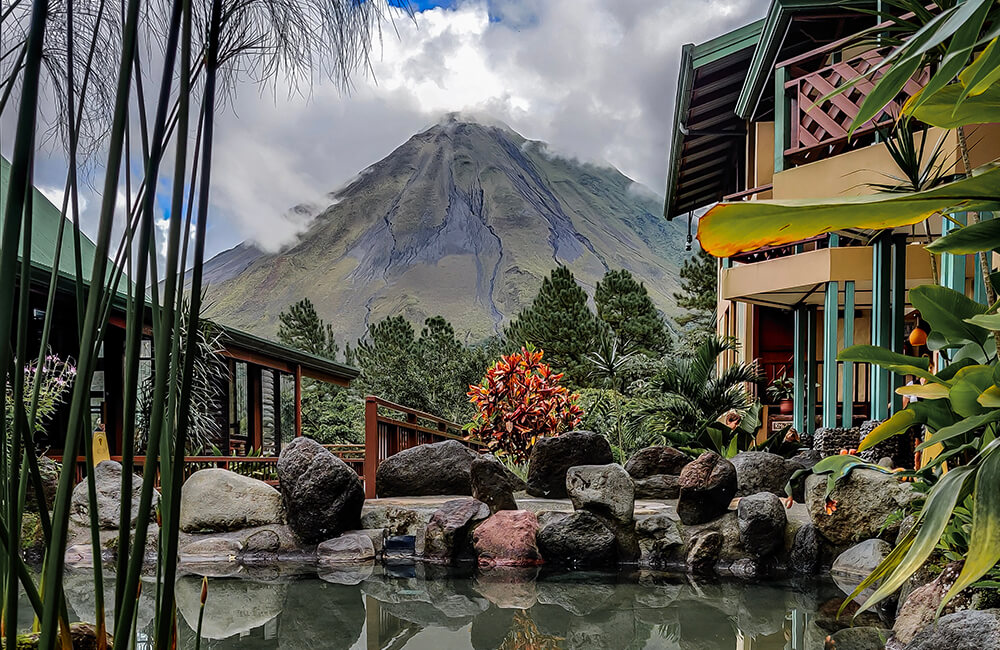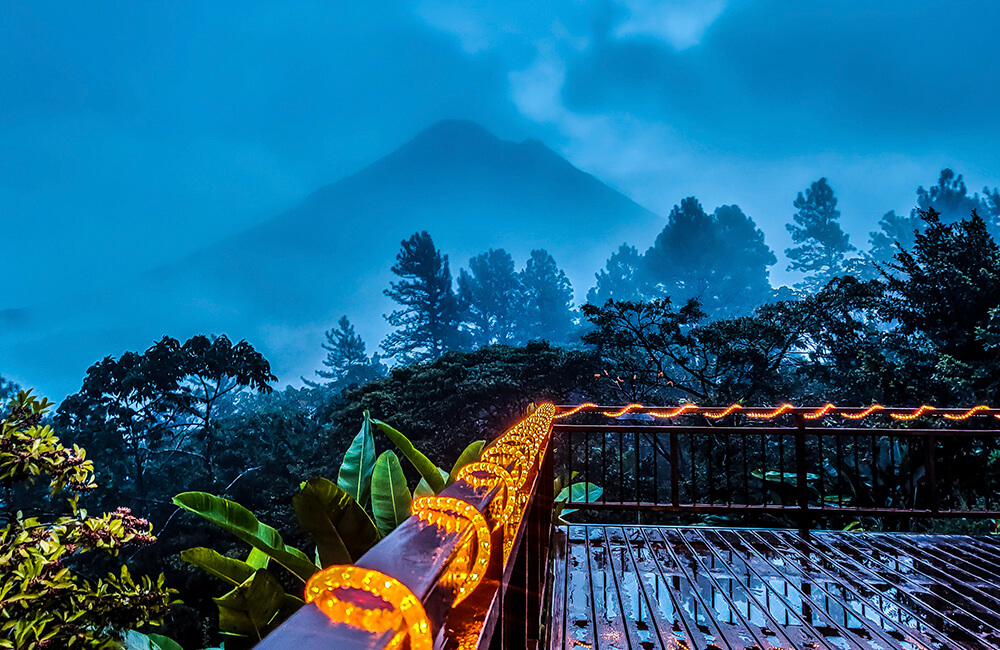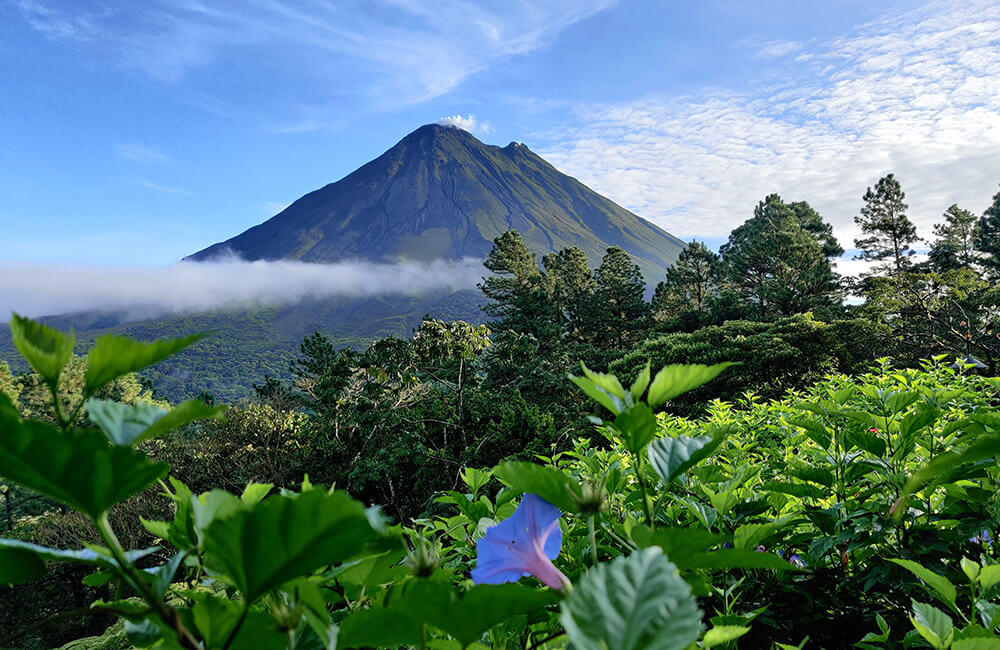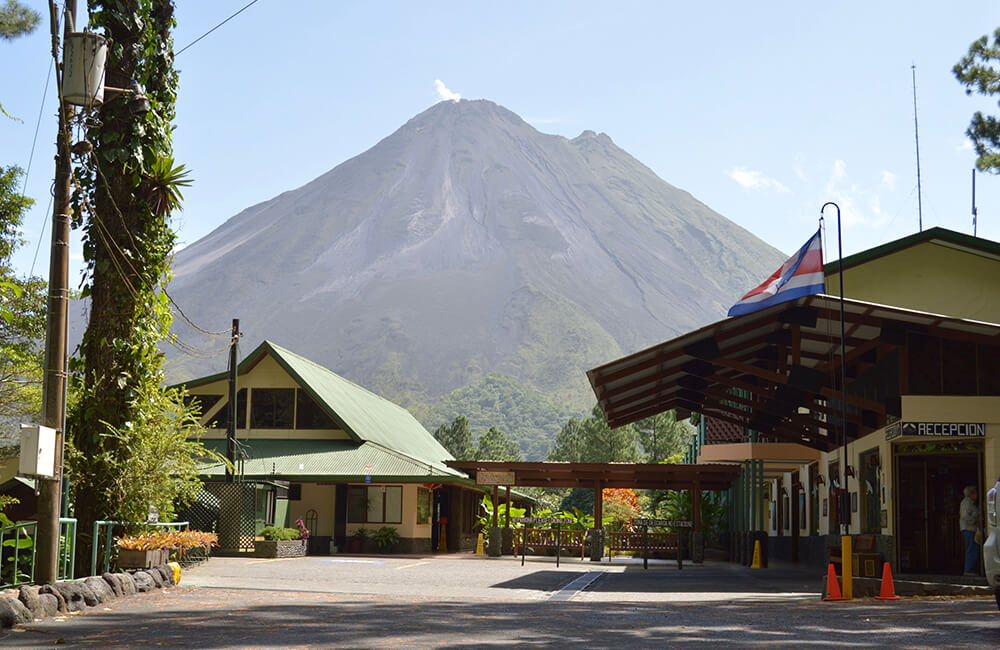In the Central Volcanic Mountain Range of Costa Rica, the Arenal Volcano is one of the country’s most famous volcanoes. Arenal is an active stratovolcano in northwestern Costa Rica, around 90 km northwest of San José, in the province of Alajuela, and 7 kilometers (4.3 miles) from the town of La Fortuna. Its 1,633 meter (5,358-foot) volcanic cone strikes an imposing figure on the landscape. Geologically, Arenal is considered to be the youngest volcano in Costa Rica; its age is estimated to be less than 7,500 years.
For centuries, the Arenal Volcano was a nearly perfect cone-shaped, rainforest blanketed volcanic mountain considered by many to be extinct.
However, at roughly 7:30 a.m. on Monday, July 29, 1968, the dormant Arenal Volcano suddenly and violently erupted with a tremendous explosion. Extreme eruptions continued unabated for several days, burying over 15 square kilometers with rocks, lava, and ash. When it was finally over, the eruptions had killed 87 people and destroyed three small villages – Tabacon, Pueblo Nuevo, and San Luís – affecting more than 232 square kilometers of land. It was a difficult time for the people of Arenal. Crops, property, and forests were damaged, and livestock died.
At the height of the eruption, Arenal Volcano was spewing out massive amounts of lava and ash and tossing giant rocks for distances of up to a kilometer at speeds of some 600 meters per second. The eruption formed three new craters: crater A at 1,060 m (3,478 ft); crater B at 1,170 m (3,839 ft); and crater C at 1,460 m (4,790 ft); crater D lies at the volcano’s summit.
For 42 years, Arenal Volcano was Costa Rica’s most active volcano with flowing lava and pyroclastic surges that blasted huge rocks and cauliflower-shaped ash clouds into the air. Explosions were often accompanied by loud rumblings, which would wake tourists up at night. The last big explosions occurred on August 25, 2001, March 2007, September 18, 2008, March 2, 2009, and May 24, 2010. None, however, compared to that of 1968.
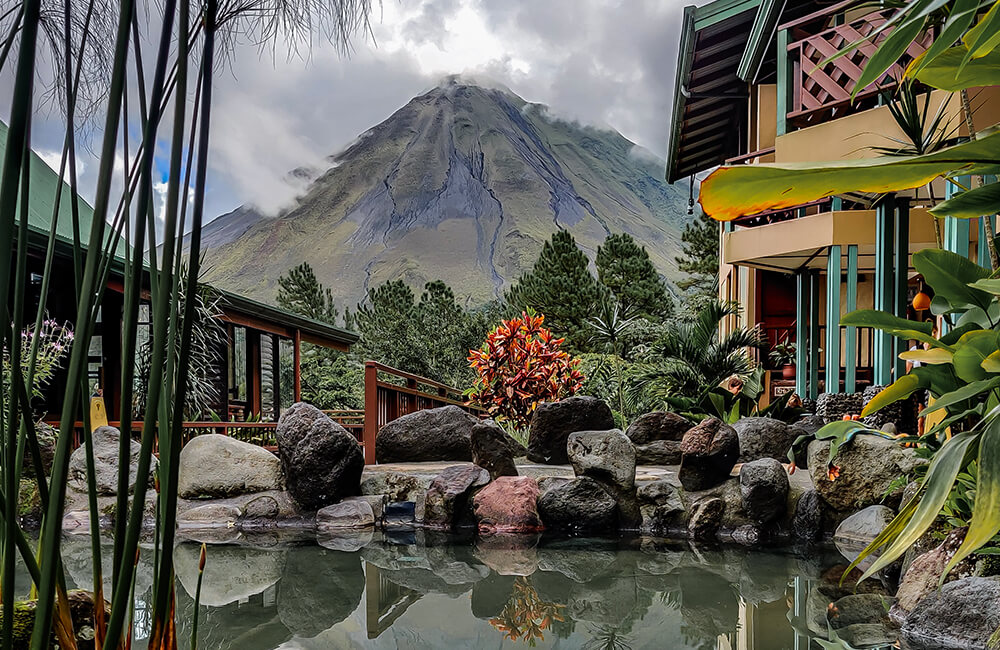
For visitors to La Fortuna, Costa Rica, Arenal Volcano put on quite a show. The volcano became one of Costa Rica’s most visited natural attractions, and tourism is now the main source of income for local residents.
Since 2010, Arenal Volcano has been in a resting phase with very little activity, a process that is natural for active volcanoes. In 2012, Arenal Volcano revived a little, spewing columns of water vapor and gases into the air from the summit. These emissions can still occasionally be seen.
The Arenal Volcano is closely and constantly monitored for the safety of local residents and visitors. Towns, hotels and public trails are located at safe distances from the volcano. Protected from danger on a ridge across the deep canyon of the Agua Caliente River, Arenal Observatory Lodge is 2.7 kilometers (1.7 miles) from the south side of Arenal Volcano, although the massive cone seems so close that you could reach out and touch it. Unlike other La Fortuna hotels, Arenal Observatory Lodge is the only Arenal lodge situated within Arenal Volcano National Park.
